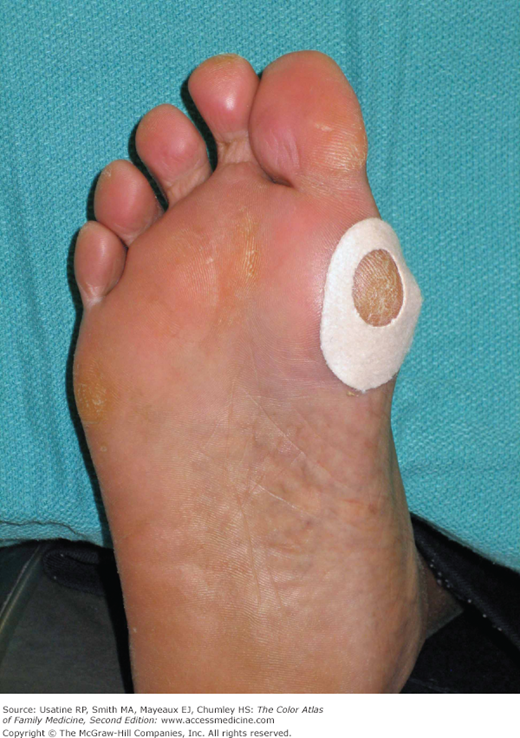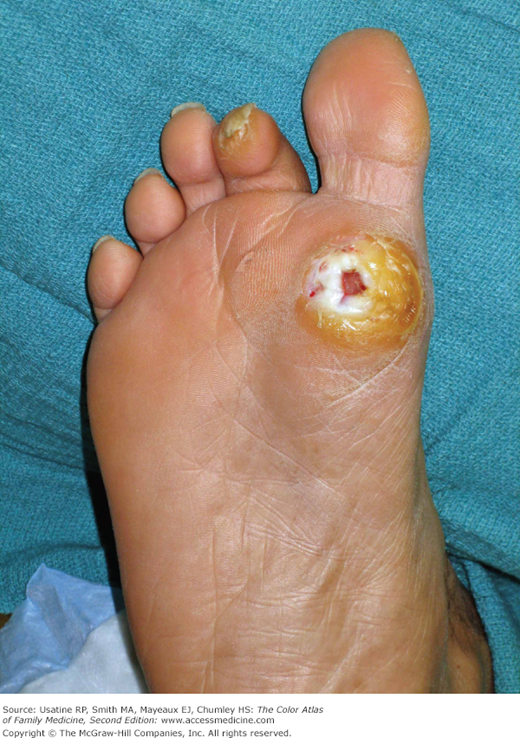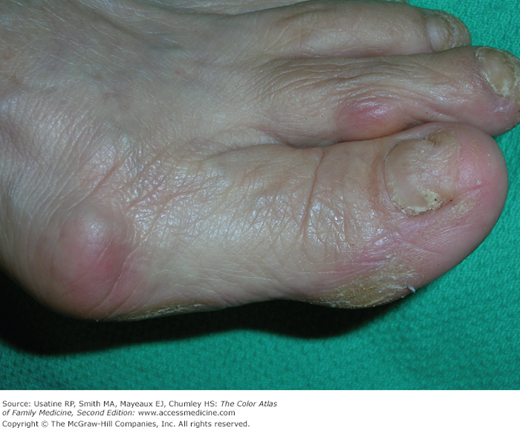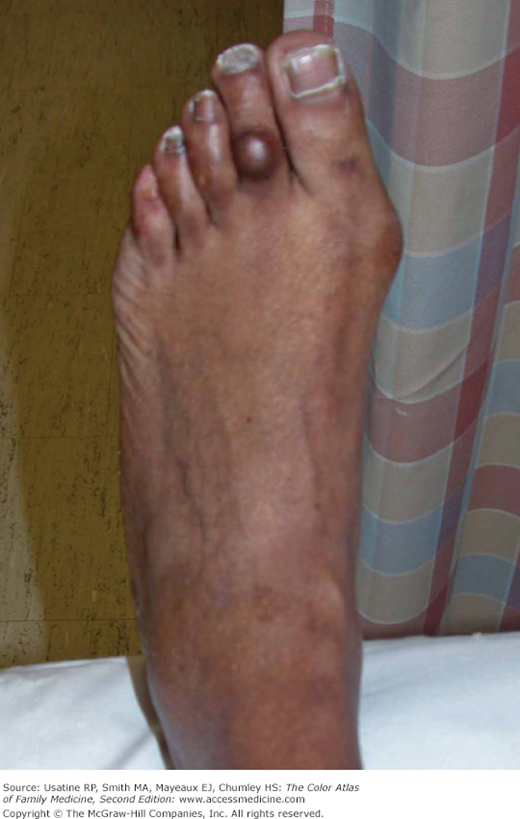Patient Story
A 52-year-old man with diabetes and mild sensory neuropathy presented with callus under “the ball of his foot” for at least 5 years. He recently noticed that the callus had grown thicker as he gained weight. Sharp debridement of the callus was performed, and an offloading pad was placed (Figure 207-1). The patient walked out of the office with less pain and discomfort. He was encouraged to use a pumice stone gently after bathing. One important goal is to avoid an ulcer (Figure 207-2), which occurred in another patient who did not get care for his callus.
Introduction
Corns and calluses are localized, thickened epidermis, resulting from mechanical pressure or shearing force applied repeatedly on the same area. A callus is located on the plantar surface and “grows in.” A corn in located on the dorsal surface or between digits and “grows out.” An ulcer forms if the lesion penetrates the subcutaneous layer. Initial management includes removing the pressure by changing shoes or using pads followed by sharp debridement if needed.
Synonyms
Epidemiology
Etiology and Pathophysiology
- Mechanical pressure from abnormal biomechanics, underlying spur/exostosis, ill-fitting shoes, physiologic repetitive activities, and foot surgery or amputation that result in increased focal pressure at the distance site.2
- Shearing force from ill-fitting shoes, foot deformities (e.g., hammer toe and bunion), and physiologic repetitive activities.
- A foreign body in the foot or shoe.
Risk Factors
- Bunion (Figure 207-3), hammer toe (Figure 207-4), flatfoot, high-arched (cavus) foot.
- Older age, fat pad atrophy.
- Smoking.
- Female gender.
- Genodermatoses with abnormal keratin formation (Figure 207-5).







